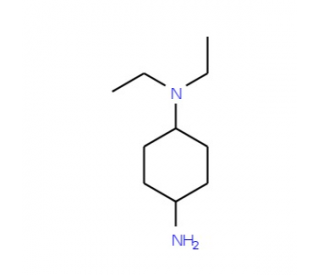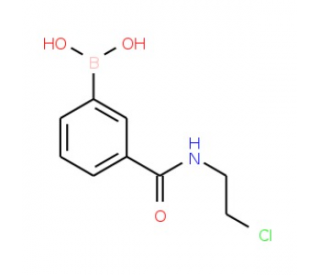详细说明
Species Reactivity
Human
Specificity
Detects human LOX-1 in ELISAs. In ELISAs, this antibody does not cross-react with recombinant mouse LOX-1.
Source
Monoclonal Mouse IgG 1 Clone # 331219
Purification
Protein A or G purified from hybridoma culture supernatant
Immunogen
Mouse myeloma cell line NS0-derived recombinant human LOX-1
Ser61-Gln273
Accession # P78380Formulation
Lyophilized from a 0.2 μm filtered solution in PBS with Trehalose. *Small pack size (SP) is supplied as a 0.2 µm filtered solution in PBS.
Endotoxin Level
<0.10 EU per 1 μg of the antibody by the LAL method.
Label
Unconjugated
Applications
Recommended
ConcentrationSample
Blockade of Receptor-ligand Interaction
In a functional ELISA, 0.5 - 2.5 μg/mL of this antibody will block 50% of the binding of 1 μg/mL of biotinylated AGE-BSA to immobilized recombinant human LOX-1 coated at 5 μg/mL (100 µL/well). At 20 μg/mL, this antibody will block >90% of the binding.
Human LOX-1/OLR1 Sandwich Immunoassay
Reagent
ELISA Capture (Matched Antibody Pair)
2-8 µg/mL
Human LOX‑1/OLR1 Antibody (Catalog # )
ELISA Detection (Matched Antibody Pair)
0.1-0.4 µg/mL
Human LOX‑1/OLR1 Biotinylated Antibody (Catalog # )
ELISA Standard
Recombinant Human LOX-1/OLR1 Protein, CF (Catalog # )
Please Note: Optimal dilutions should be determined by each laboratory for each application. are available in the Technical Information section on our website.
Preparation and Storage
Reconstitution
Reconstitute at 0.5 mg/mL in sterile PBS.
Shipping
The product is shipped at ambient temperature. Upon receipt, store it immediately at the temperature recommended below. *Small pack size (SP) is shipped with polar packs. Upon receipt, store it immediately at -20 to -70 °C
Stability & Storage
Use a manual defrost freezer and avoid repeated freeze-thaw cycles.
12 months from date of receipt, -20 to -70 °C as supplied.
1 month, 2 to 8 °C under sterile conditions after reconstitution.
6 months, -20 to -70 °C under sterile conditions after reconstitution.
Background: LOX-1/OLR1
Lectin-like oxidized low-density-lipoprotein receptor-1 (LOX-1), also known as oxidized low-density-lipoprotein receptor-1 (OLR-1), is a type II transmembrane receptor belonging to the C-type lectin family (1). It also belongs to the functionally defined scavenger receptor (SR) superfamily, whose members share the common ability to bind and internalize modified forms of Low Density Lipoproteins (LDL) (2-4). LOX-1 is the first member of the class E scavenger receptor subfamily (SR-E). It binds and supports the internalization of multiple structurally unrelated macromolecules including oxidized LDL, advanced glycation end products (AGE), activated platelets, bacteria, apoptotic or aged cells, and heat shock proteins (5-7). LOX-1 has also been implicated as an intestinal receptor involved in the transcytosis of pancreatic bile salt-dependent lipase (8). The human LOX-1 gene encodes a 273 amino acid (aa) residue protein with a short N-terminal intracellular domain, a transmembrane domain, an extracellular stalk/neck region followed by a C-type lectin-like domain (CTLD) (1, 6). The CTLD, which is required for ligand recognition, contains the six conserved cysteine residues present in all C-type lectins, but lacks the Ca2+-binding residues found in classical C-type lectins. LOX-1 can be detected on activated endothelial cells, vascular smooth muscle cells, macrophages, intestinal cells and dendritic cells (6-8). The expression of LOX-1 is induced by proinflammatory or proatherogenic stimuli, as well as by oxidized LDL itself and hemodynamic or oxidative stress. Human LOX-1 exists on the cell surface as covalent homodimers, which can further associate into non-covalent-linked oligomers (9). Cell surface LOX-1 can also be cleaved by yet unidentified proteases to release the soluble LOX-1 extracellular domain (6). Binding and endocytosis of oxidized LDL by LOX-1 induces oxidative stress, activates NF kappa B, and upregulates the expression of monocyte chemoattractant protein-1 and matrix metalloproteases (5 - 9). LOX-1-dependent oxidized LDL uptake also induces apoptosis by inducing the expression of the pro-apoptotic Bax and downregulation of the anti-apoptotic Bcl-2 (10). Oxidized LDL plays a key role in the pathogenesis of atherosclerosis and endothelial dysfunction. Blockade of LOX-1 functions may turn out to be a suitable target for the therapeutic intervention of atherosclerosis.
References:
Sawamura, T. et al. (1997) Nature 386:73.
Daugherty, A. et al. (2000) Curr. Opin. Cardiovasc. Pulm. Ren. Invest. Drugs. 2:223.
Platt, N. and S. Gordon (2001) J. Clin. Invest. 108:649.
Platt, N. and S. Gordon (1998) Chem. Biol. 5:R193.
Jono, T. et al. (2002) FEBS Lett. 511:170.
Kume, N. et al. (2001) Curr. Opin. Lipidol. 12:419.
Delneste, Y. et al. (2002) Immunity 17:353.
Bruneau, N. et al. (2003) Mol. Biol. Cell 14:2861.
Xie, Q. et al. (2004) DNA and Cell Biol. 23:111.
Chen, J. et al. (2003) Circ. Res. 94:370.
Long Name:
Lectin-like Oxidized Low-density Lipoprotein Receptor 1
Entrez Gene IDs:
4973 (Human); 108078 (Mouse)
Alternate Names:
CLEC8A; CLEC8ASLOX1; C-type lectin domain family 8 member A; hLOX-1; Lectin-like oxidized LDL receptor 1; Lectin-like oxLDL receptor 1; Lectin-type oxidized LDL receptor 1; LOX1; LOX-1; LOX1ox LDL receptor 1; LOXIN; OLR1; oxidised low density lipoprotein (lectin-like) receptor 1; oxidized low density lipoprotein (lectin-like) receptor 1; oxidized low-density lipoprotein receptor 1; oxidized low-density lipoprotein receptor 1, soluble form; Ox-LDL receptor 1; SCARE1; scavenger receptor class E, member 1; SR-E1










 粤公网安备44196802000105号
粤公网安备44196802000105号